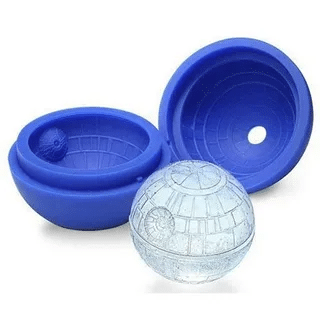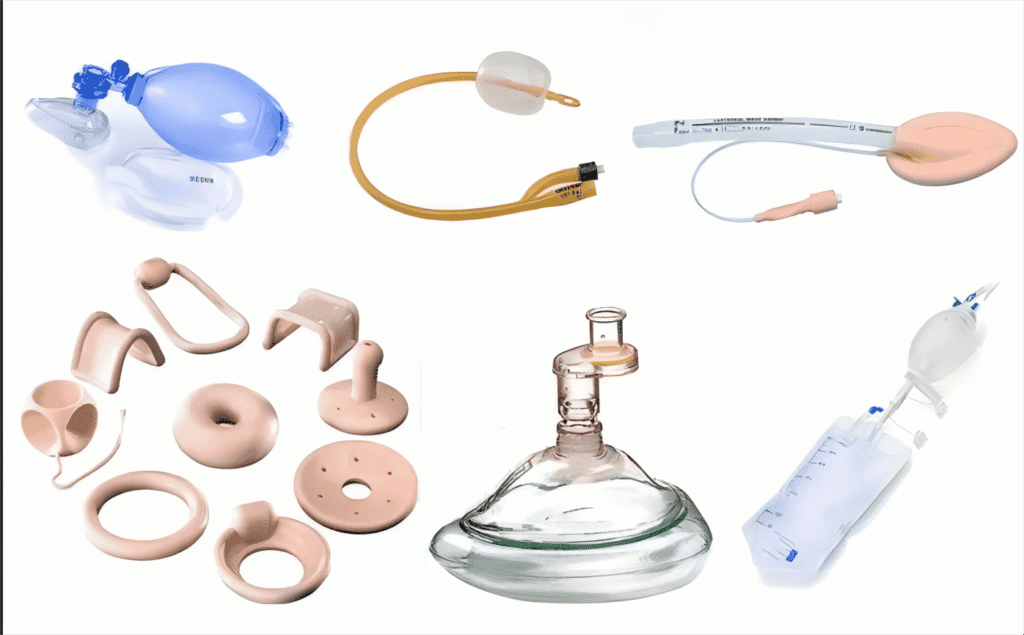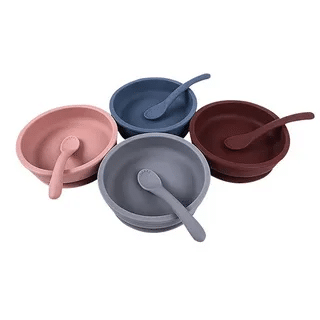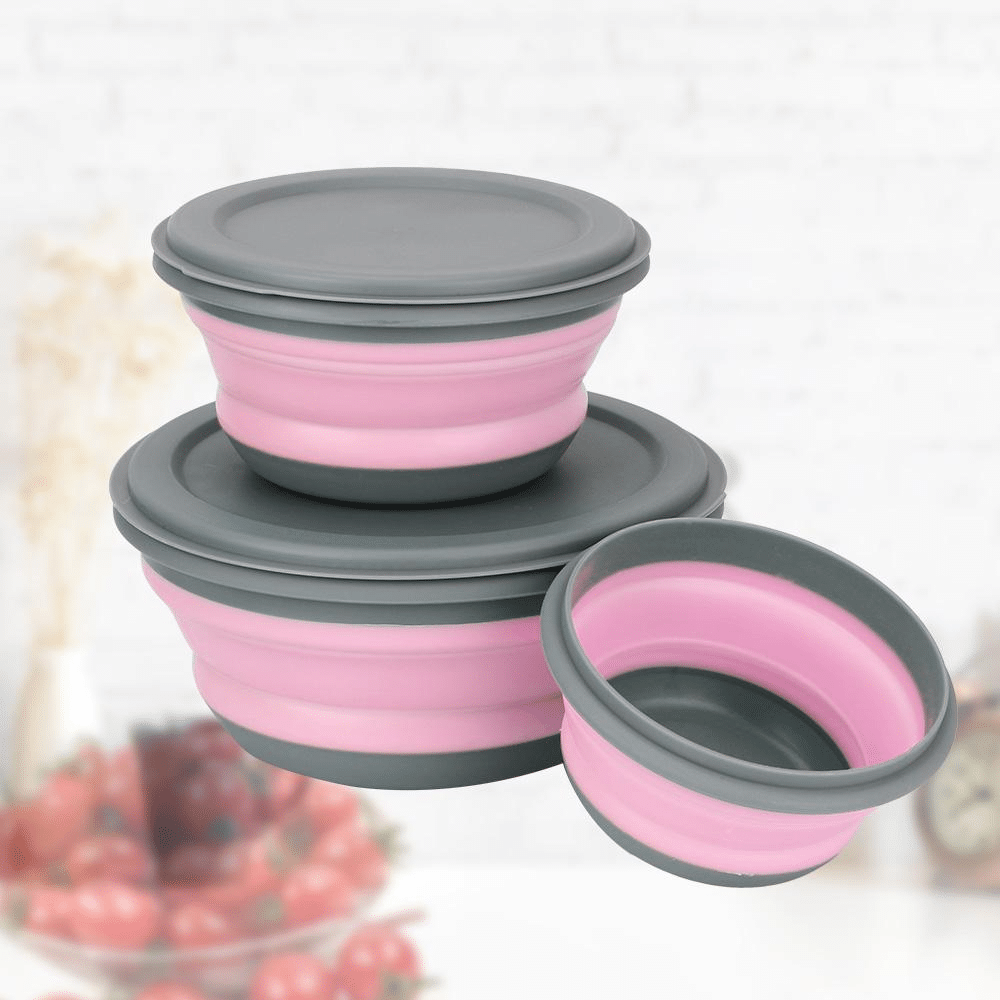
FDA and LFGB are essential with silicone kitchenware purchasing since they ensure that the material will not leach toxins in your food, which will be harmful to your health and will prove dependable over time. These will keep you out of the toxics or subpar output, certified bowls are prepared using pure food-grade silicone and subjected to numerous tests to ensure that they are non-toxic, odorless and that they will not collapse when exposed to heat. As experts in Dongguan Haotian Silicone Technology Co., LTD., we have been on these standards since years and in a guide, we are going to deconstruct what they entail, their variations, and how to identify compliant products so that you can peacefully cook in your kitchen.
What Is Food-Grade Silicone?

Food-grade silicone is a high-grade, non-reactive polymer created with direct contact with food in consideration, where no chemical reactions or migrations can occur to cause food contamination. It is made of silicon-oxygen chains and organic groups, which are cured with platinum based catalysts in order to remove volatile byproducts- Unlike silicone produced in industry, which may include fillers or even peroxide cure, which adds impurities. This property renders food grade silicone stable to range between -40degC to 250degC temperatures without deterioration, thus it can be used in the bowls put in the microwaves, ovens, or freezers.
Purification is the secret of its safety, which leads to the creation of a naturally BPA-free, phthalate-free, and bacteria-resistant material. Haotian silicone only gets this grade in its sourcing of bowls because it fits the criteria of both the parents and the brands who do not want to compromise health at the expense of flexibility and durability.
Understanding FDA Standards

FDA (U.S. Food and Drug Administration) establishes standards on food-contact materials in 21 CFR 177.2600 that deal with indirect additives such as silicone so as not to affect the safety or quality of food. This is done by testing extractables the test simulates conditions of exposure to water, alcohol or fatty simulants at high temperatures (e.g. 121degC in 30 minutes) to test any leached materials, a limit of 10 mg/dm2 is under most circumstances.
Silicone bowl material certified by FDA also has to demonstrate non-toxicity, non-heavy metals or volatile that may migrate. This certification is essential to markets in the U.S. and it is a confirmation that the bowl can be used again and again without off-gassing or discoloring. Practically, this implies that your silicone bowl is safe to use boiling soups or frozen desserts and this is what we at Haotian do via batch testing to ensure we deliver quality products.
Understanding LFGB Standards

Germany has a general food safety law known as LFGB or Lebensmittel-, Bedarfsgegenstande -and Futtermittelgesetzbuch which is acknowledged throughout the EU under Regulation (EC) No 1935/2004. It does not simply cover the chemical safety but sensory considerations as well–one must not ensure that the material will provide the food with taste, smell or color. Simulants such as 3% acidic acid (to test acidic foods) or 50% ethanol (to test alcohol) at temperatures up to 100degC and a total of 4 hours are used to test, with total migration being limited to 10 mg/dm2.
These extra checks make LFGB approved silicone bowl certification more often seen as being stricter, and a standard in the compliance of Europe. It deals with the real life application, such as the storage of vinegary sauces without contaminating the flavors. Haotian production integrates LFGB protocols throughout to produce silicone that is platinum-cured to accommodate the needs and customers who would be exporting its products to various markets.
FDA vs. LFGB — What’s the Difference?

Although the goals of FDA and LFGB are multiplied in the food safety, the FDA concentrates on the U.S.-based limits of chemical migration and composition non-toxicity which is primarily applied to the common food use conditions in the United States such as microwave heating. However, LFGB is more inclusive of the European needs due to the sensory testing that it does; therefore, it is more detailed to spot changes that might be subtle and therefore impact food quality.
Basically, FDA is composition-based, whereas LFGB is holistic with organoleptic inputs- most manufacturers such as our Haotian in search of covering global demands have adopted the two. The distinction is important to buyers: FDA is better in the U.S. markets, whereas LFGB is an additional guarantee of the export to the EU. Dual certification of products reduces the risks seen and it was the case with partners such as Disney which we have ensured that the bowls are safe in the market all over the world.
Why These Certifications Matter When Buying Silicone Bowls

These certifications assure you of quality products that may not have controlled fillers and thus pose a risk to health such as exposure to toxins or allergic reactions. Without them, a bowl can leak chemicals during heating, which is very dangerous when it is used to feed babies or to feed them in the day. Certified silicone bowls would be a guarantee of compliance, so brands would not have to be so liable and families could feel safer, say, making a bowl of hot porridge without having to wonder about the presence of any hidden contaminants.
Food-grade claims made by uncertified suppliers are not confirmed, and usually contain shortcuts, such as use of peroxide-cured silicone, which leaves residues. Safety, which is supported by independence testing, is important since it safeguards your health and investment. When clients demand these as in our experience at Haotian, fewer returns and greater satisfaction are realized, which reinforces the significance of these demands in the establishment of trust.
How Manufacturers Achieve Certification

The FDA and LFGB certification are a multi-step process, which involves sourcing of the raw materials through approved suppliers, in-house formulation to specifications of purity requirements. Testing is done by outside testing laboratories such as SGS, the migration and sensory testing of samples- records are displayed in the form of batch records, material data sheets and compliance statements.
Audits check the whole supply chain, including mixing and packaging and make sure nothing gets contaminated. At Haotian Silicone we have ISO9001 systems and ISO14001 systems which simplify this and IPS frequent audits and alliances with such companies as P&G require best compliance. This is the strictest strategy that involves our patented mold to produce uniform quality that ensures that no bowl is below standard.
How to Identify Certified Silicone Bowls
In order to identify original certified products, make sure it has clear labelling using FDA or LFGB icons and batch numbers- the legitimate vendors will have test reports or links to certifications. Find material information, such as 100 percent food-grade silicone and do not accept generalized statements. Check the company credentials – our site at Haotian records audits and patents.
Request documentation when shopping in large quantities and in the case of online shopping, look at reviews that say safety. The certified bowls are smooth, smell-free, and do not have sticky residues. Through these, you are guaranteed that what you purchase is really safe as we underline in our partnership with Universal Studios.
Conclusion: Prioritizing Certified Safety in Your Choices
Overall FDA and LFGB certified silicone bowls provide the confidence that you require when it comes to using them on a daily basis. Innovation and safety quality are not just this but a promise that is upheld by quality, and we live by it in Haotian Silicone and the best custom silicone bowl.